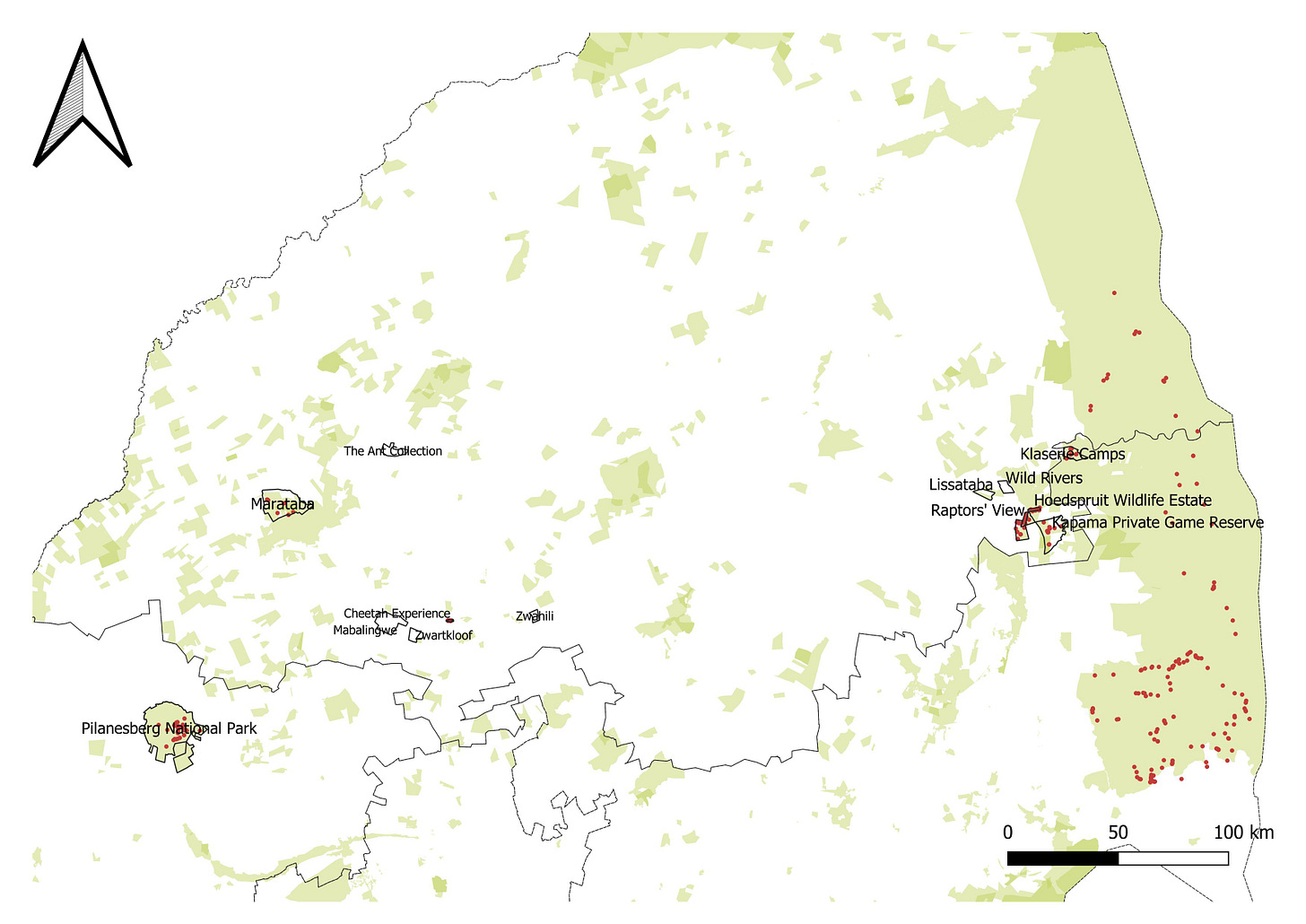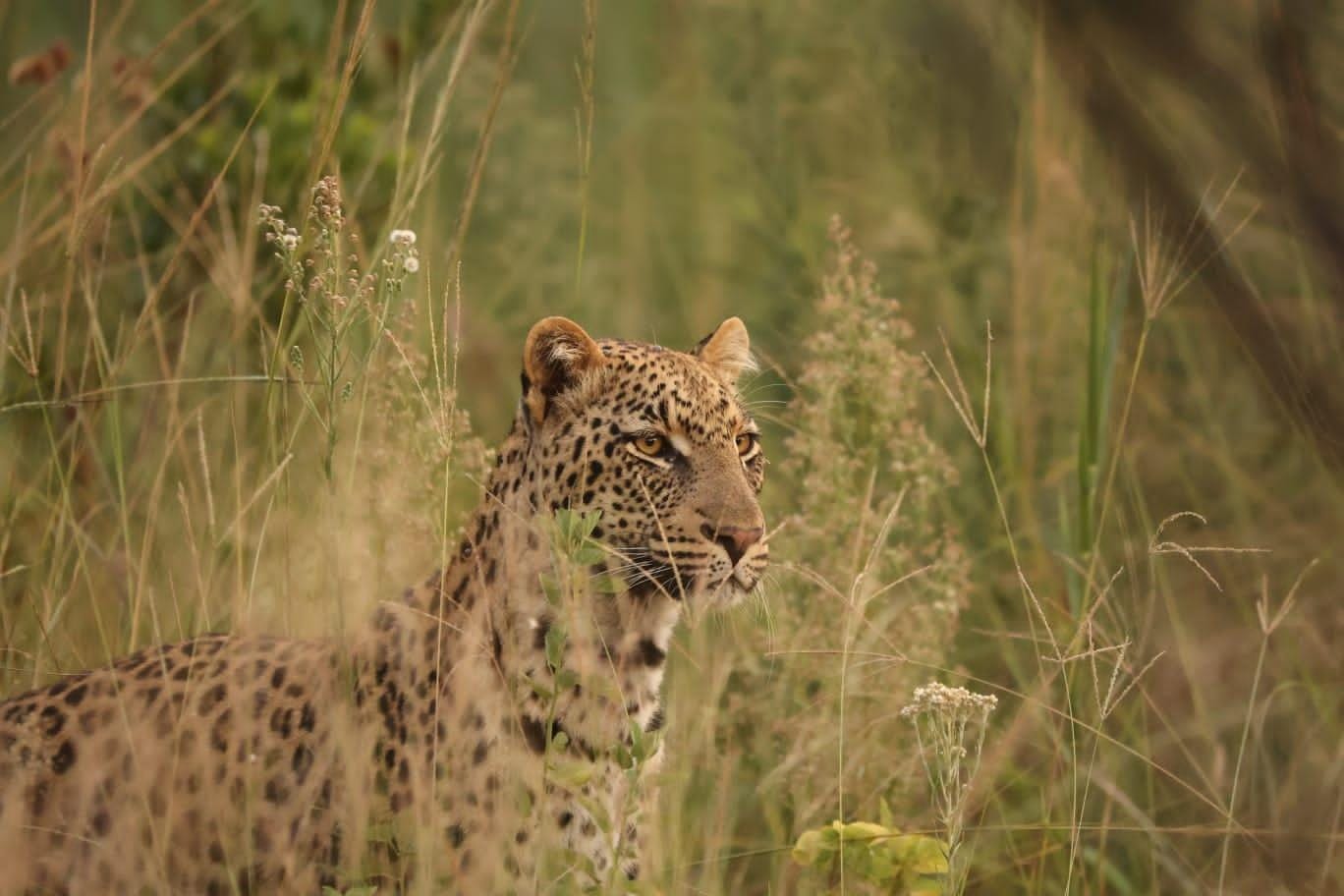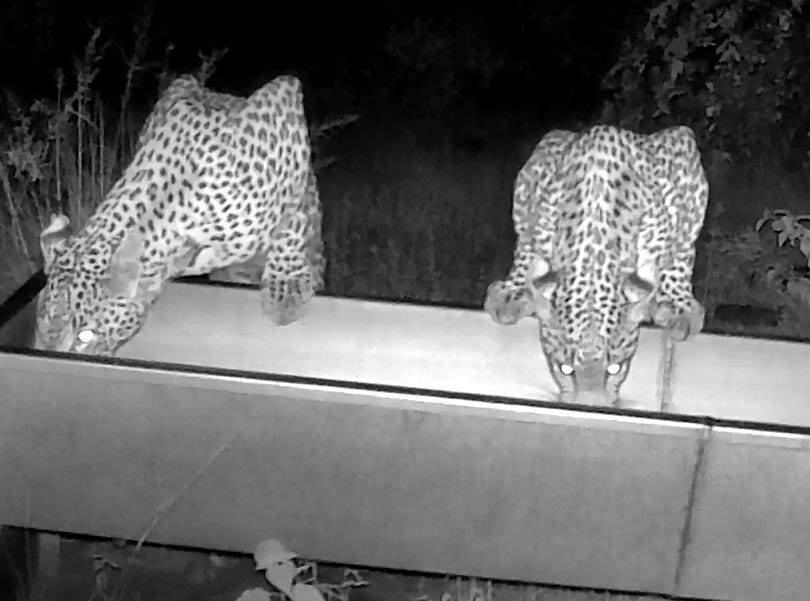Monthly newsletter - March 2023
118,229 hectares covered by the Ingwe Leopard Research.
Who are the new additions?
This month, another two reserves and another lodge from an already enrolled reserve joined the project. For the first time, one of the reserve is outside the Limpopo Province. It is located in the North West Province.
Last Word Kitara is the second lodge that has joined in the Klaserie Private Nature Reserve. It is a five-star luxury lodge and the sister camp of Nzumba camps. Their two guides are also recording leopard sightings. Still in the Hoedspruit area, Lissataba Private Game Reserve, neighbour of Rukiya Camp in Wild Rivers, is 2,500 ha area with privately owned houses. Lissataba has many historical data of leopards that will be uploaded on the African Carnivore Wildbook next month. We should all be looking forward to discover if leopards captured by the camera traps in Lissataba are also roaming in the enrolled reserves slightly further South. Finally, the Pilanesberg National Park (50,277 ha) first reserve in the North West Province is now part of the Ingwe Leopard Research. In the Pilanesberg, Heinrich Neumeyer, started a couple of years ago the leopard ID project. Tourists became highly involved in the project and shared on the Facebook page all their sightings. They also log sightings on the mobile app - Latest Sightings. As the project is already well run in the Pilanesberg, the SMART mobile app will not be used in this reserve as it is better to use what already exists. Interestingly, the development of the leopard ID project had financial benefits for the reserve as tourists built a strong bond with those leopards.
Thanks to Latest Sightings, all the data from the Kruger National Park are now being uploaded on ACW. Those data are logged by tourists visiting the park and who have all became citizen scientists. Next time you visit any of the National Parks and spot a leopard, log the sighting on the app to contribute as well. Download their app!
Below is the map with, in green all the reserves enrolled and in blue those with whom discussions are ongoing. Out of the 31 reserves displayed, half are outside of Protected Areas.
Read more to understand why it is important to survey reserves outside of Protected Areas.
How many data were submitted?
Zwartkloof submitted their first leopard tracks of the year. The reserve that submitted the most data captured in March was Cheetah Experience followed by Marataba Conservation Camps. All three are from the Waterberg area!
On the table below, the SMART uploads corresponds to the number of sightings logged on the app by the different reserves and the number of photos taken through the app. The number of camera traps submissions also include historical data and the ACW (African Carnivore Wildbook) uploads are all the images (sightings + camera traps) uploaded on the platform in order to perform AI analysis and individually identify leopards. Finally, there are now 14 reserves enrolled in the project and 21 different citizen scientists have shared data this month. The number of citizen scientists does not include all the tourists logging their data on the Latest Sightings mobile app.
Below are maps showing where sightings have been recorded since the beginning of the year. For more in depth information, chose a paid subscription! For only 5USD a month, you will help support and grow the project.


The Global Leopard Conference
The first Global Leopard Conference was held in March for five days. It was a virtual conference that brought together organisations and individuals researching the nine subspecies of leopards in the world.
Here I want to share about a talk that reasonated with me. It was from Dr Guy Balme from Panthera. He discussed his published article "Failure of research to address the rangewide conservation needs of large carnivores: leopards in South Africa as a case study".
Below are some key points to remember:
95% of projects conducting leopard research in South Africa occur inside protected areas although it was estimated that 63% of suitable leopard habitat is outside PAs.
Some topics regarding leopard research are over-studied (e.g. feeding ecology, intraspecific interactions) while others (management, informing policies) are less studied but nonetheless crucial for leopard conservation.
Basic research (i.e. feeding ecology) is more prominent than applied research.
About half of the research conducted, even over many years, failed to publish their findings.
Almost 80% of the projects use radio-collars although it was estimated that they induce mortality in 9% of the collared individuals. The main reason is that collars are placed on males younger than 7 years old although the size of their neck grows exponentially until that age, leading to strangulation.
Camera traps is the second most widely used method to study leopards followed by questionnaires.
Some of his recommendations are:
- reduce duplication in research effort
- situate research in a broader conservation context (address key threats outside protected areas & make the research transdisciplinary)
- focus on solutions, not problems
- ensure recommendations are actionable
- develop a communication plan between the different organizations
- consider trade-offs between the costs & benefits of research and promote non-invasive research techniques.
Conducting studies outside of protected areas is more challenging as equipment can easily be damaged or stolen and some landowners are reluctant to have their land being surveyed for privacy or business reason. Trust, open communication and involvement of the stakeholders are therefore essential to secure a long-term relationship to conduct research.

Help us!
If you want to learn more about the territory and distribution of those leopards sighted, click on the susbcribe button below and chose paid subscription (USD5/month). You will also have access to in depth blog posts about research & conservation, the tools we use and preliminary analysis. Last but not least, you will receive £100 discount on our published prices if you book a safari with us in South Africa in 2023. Promo code will be shared in the paid publications. T’s and C’s apply.
Help us expand and leave a long lasting track in the world of leopard conservation! Share this newsletter on social media and follow us on Instagram!








